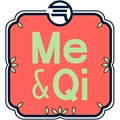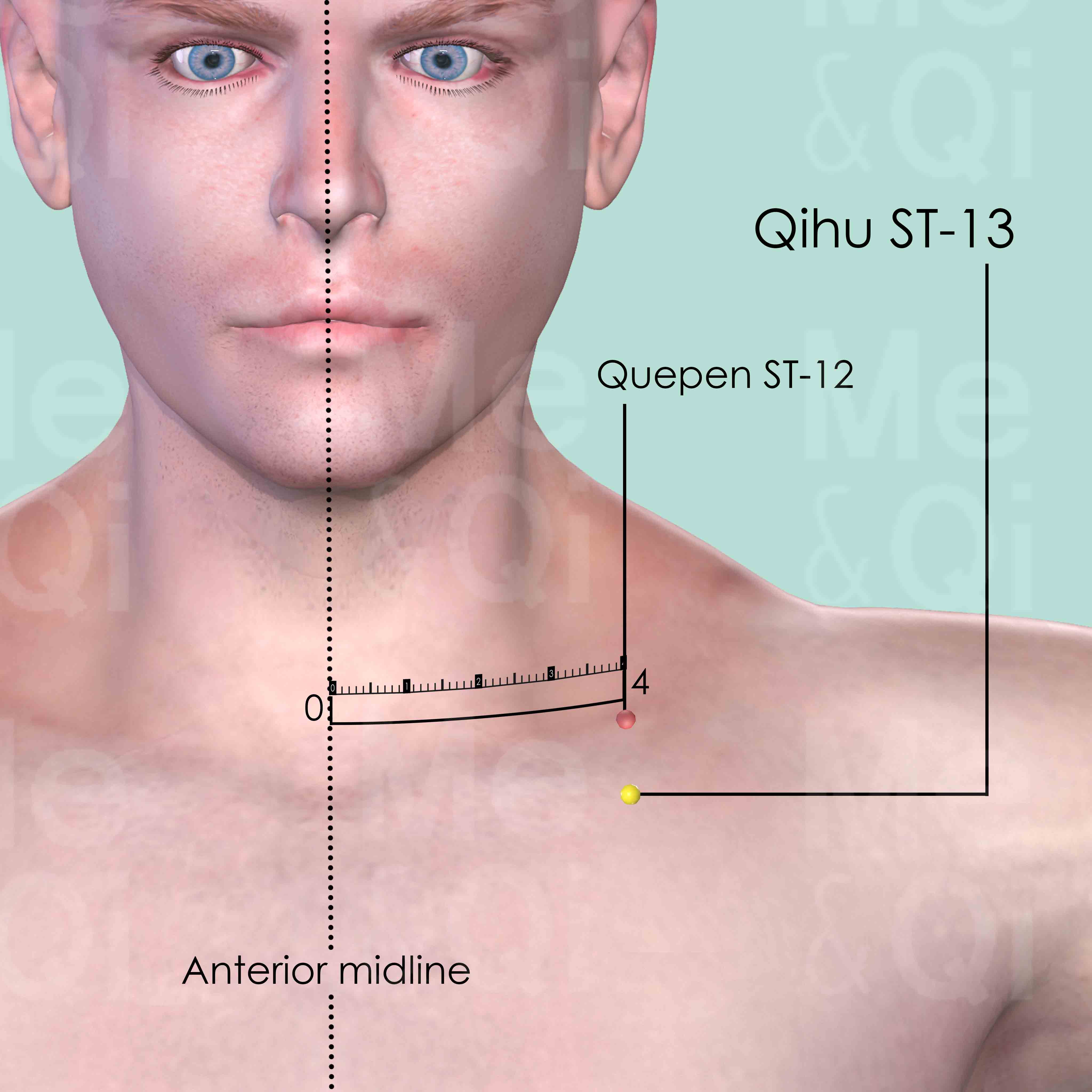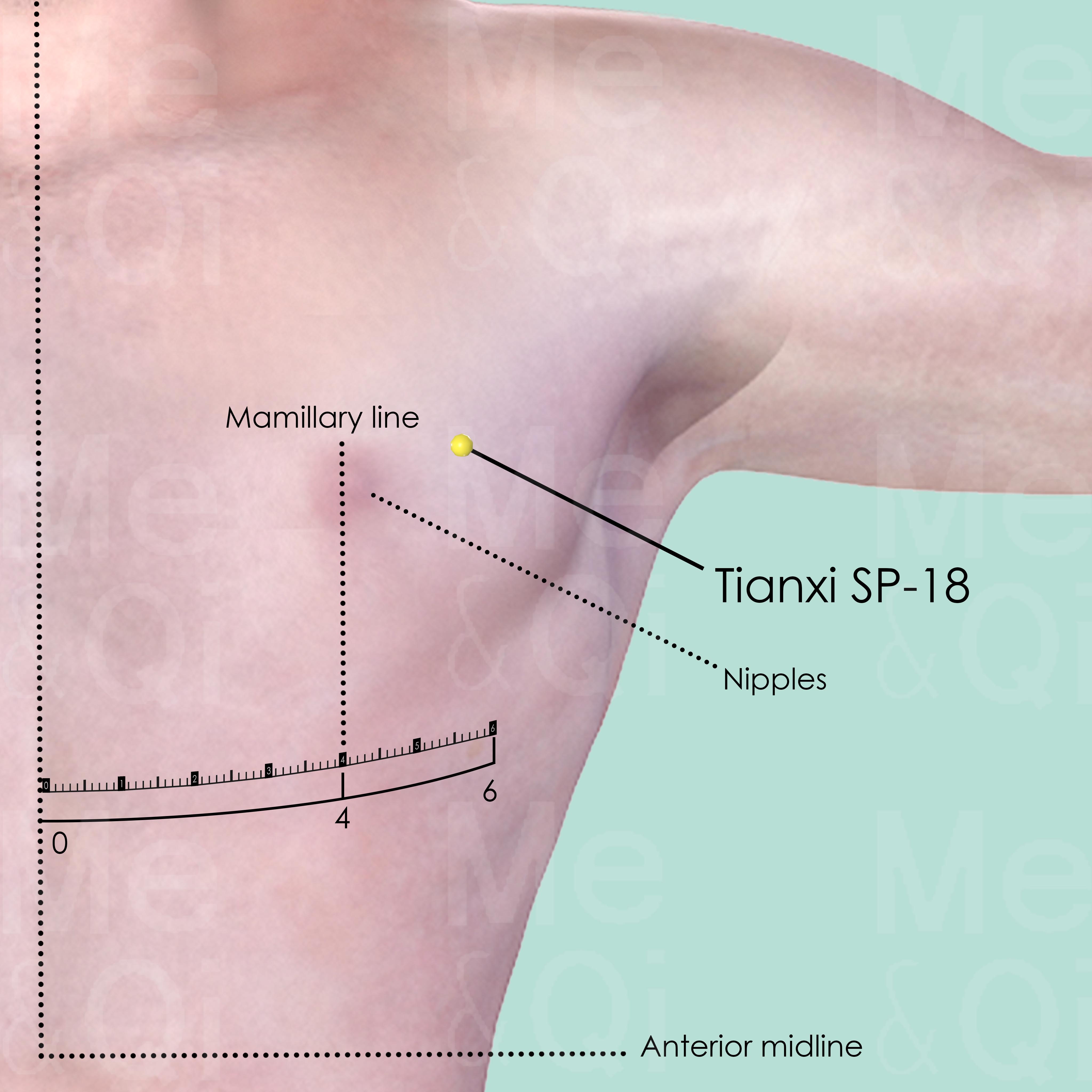Hiccupsaccording to TCM
Symptom family: Hiccup Conditions
Sub-symptom(s): Neurological Hiccup Recalcitrant Hiccup
What is Hiccups?
Hiccups are involuntary contractions of the diaphragm followed by the sudden closure of the vocal cords, which produces the characteristic "hic" sound. This common reflex can occur sporadically and resolve on its own or become persistent, affecting the individual's quality of life.
While often benign, persistent or severe hiccups can signal underlying health issues. Understanding hiccups in their various forms, including neurological and recalcitrant types, is essential for effective management and treatment.
How does TCM view Hiccups?
Traditional Chinese Medicine (TCM) interprets hiccups as a disruption in the body's natural flow of Qi, specifically an upward disturbance of Stomach Qi, or a manifestation of disharmony between the organs.
According to TCM, the body is a system of balanced energies, and hiccups are a sign that this balance is disturbed. Identifying the precise pattern of disharmony is crucial in TCM, as it guides the treatment strategy to not only alleviate the symptoms but also to address the root cause of the hiccups.
Root Causes of Hiccups in TCM
In TCM, hiccups are primarily attributed to factors that disrupt the smooth flow of Qi across the body. Two common patterns include Rebellious Qi, where Qi flows in the opposite direction than intended, causing symptoms like hiccups, nausea, and upper abdominal discomfort, and Qi Stagnation, which involves a blockage that prevents Qi from moving freely, leading to tension, discomfort, and hiccups.
These patterns are often linked to emotional stress or dietary indiscretions and require a nuanced approach to treatment that restores harmony and Qi flow.
Explore below more details about what might cause Hiccups according to TCM.
- By Syndrome
- By Organ
- Qi Rebellion
- Qi Stagnation
- Qi Deficiency
- Phlegm
- Yin Deficiency
- View More Causes
- Stomach
- Liver
Qi Rebellion
Rebellious Qi in TCM is a bit like having a rebel inside your body. Qi, which is the vital energy flowing through your body, is supposed to move in certain directions to keep everything in balance and working well. But with Rebellious Qi, this energy decides to go the opposite way. Think of it like a river flowing upstream instead of downstream. This can cause various issues like heartburn, coughing, or even headaches. It's as if the body's natural flow is disrupted, creating a kind of internal chaos. TCM focuses on correcting this flow, restoring order and balance.... see more
Qi Rebellion Patterns That Can Lead to Hiccups
Common Symptoms: Belching Hypochondriac Distention Upper Abdominal Distension Sighing Nausea Or Vomiting Irritability Headaches Nausea
| Pattern Name | Relevant Symptoms | Relevant Formulas |
|---|---|---|
| Rebellious Liver Qi | Hiccuping, Hypochondriac distention, Upper abdominal distension, Hiccups, Sighing, Nausea or vomiting, Belching, Stomach churning, Irritability, Breast engorgement, Headaches, Dizziness... see more | Chai Hu Shu Gan San | Si Ni San |
| Rebellious Liver Qi invading the Stomach | Hiccuping, Irritability, Upper abdominal pain, Upper abdominal distension, Hypochondriac pain, Hypochondriac distention, Upper abdominal oppression, Acid reflux, Hiccups, Belching, Nausea or vomiting, Sighing, Weak limbs... see more | Xuan Fu Dai Zhe Tang | Ban Xia Hou Pu Tang | Si Mo Tang | Ju Pi Zhu Ru Tang | Ding Xiang Shi Di Tang |
| Rebellious Qi | Hiccuping, Hiccups, Belching, Nausea, Vomit, Coughing, Asthma | Chai Hu Shu Gan San | Si Ni San | Xuan Fu Dai Zhe Tang | Ju Pi Zhu Ru Tang | Su Zi Jiang Qi Tang |
| Rebellious Stomach Qi | Hiccuping, Nausea, Dysphagia, Belching, Vomit, Hiccups | Ban Xia Hou Pu Tang | Ding Xiang Shi Di Tang | Huo Xiang Zheng Qi San |
Qi Stagnation
Qi Stagnation in TCM is like having a traffic jam in your body's energy system. Qi, the vital life force that flows through your body, is supposed to move smoothly to maintain health and balance. But with Qi Stagnation, this flow gets blocked or slowed down, like cars stuck on a highway. This can lead to symptoms like feeling stressed, emotional mood swings, and physical discomfort, often described as a feeling of fullness or tightness, especially in the chest or abdomen. It's as though the body's internal energy circulation is disrupted, causing various issues. TCM sees this as an energy flow problem, different from modern medicine's focus on specific physiological processes.... see more
Qi Stagnation Patterns That Can Lead to Hiccups
Common Symptoms: Upper Abdominal Distension Irritability Nausea Vomit Upper Abdominal Pain Belching Hypochondriac Distention Chest Distension
| Pattern Name | Relevant Symptoms | Relevant Formulas |
|---|---|---|
| Liver Qi Stagnation | Hiccuping, Hypochondriac distention, Chest distension, Upper abdominal distension, Abdominal distention, Sighing, Melancholia, Depression, Mood swings, Irregular periods, Globus sensation, Pre menstrual breast distension, Pre menstrual tension, Anxiety, Anger... see more | Xiao Yao San | Jia Wei Xiao Yao San | Yue Ju Wan | Chai Hu Shu Gan San | Yi Guan Jian |
| Stomach Qi Stagnation | Hiccuping, Upper abdominal pain, Upper abdominal distension, Belching, Nausea, Vomit, Hiccups, Irritability... see more | Ban Xia Hou Pu Tang | Zuo Jin Wan |
Qi Deficiency
Qi Deficiency in TCM is like running low on battery power. Qi is the vital energy that powers every function in your body. When there's a Qi Deficiency, it means your body doesn't have enough of this essential energy. This can make you feel tired all the time, weak, or even cause shortness of breath. It's similar to how you feel when you haven't had enough sleep or nutritious food. Your body just doesn't have the energy it needs to perform at its best. Unlike modern medicine, which often focuses on specific physical causes for fatigue and weakness, TCM views Qi Deficiency as an overall energy depletion that affects your entire well-being, and it seeks to replenish and balance this vital energy.... see more
Qi Deficiency Patterns That Can Lead to Hiccups
| Pattern Name | Relevant Symptoms | Relevant Formulas |
|---|---|---|
| Stomach Qi Deficiency with Phelgm | Hiccuping, Persistent belching, Hiccups, Vomit, Nausea or vomiting, Upper abdominal focal distention, Chronic gastritis, Stomach prolapse, Stomach dilation, Peptic ulcer, Chronic hepatitis... see more | Xuan Fu Dai Zhe Tang |
Phlegm
In TCM "Phlegm" as a pattern of disharmony is a complex concept that extends beyond the physical manifestation of mucus. It represents a pathological factor that can disrupt the flow of Qi (vital energy) and blood, leading to various health issues. Phlegm in TCM is seen as a sticky, turbid substance arising from the body's inability to metabolize fluids properly, often due to a dysfunction of the spleen. It's not only associated with respiratory problems like cough and congestion but also with systemic issues. Symptoms can include a feeling of heaviness, mental cloudiness, dizziness, and in some cases, the formation of lumps or masses. Phlegm can even be "invisible," contributing to emotional disturbances like depression or stress. ... see more
Phlegm Patterns That Can Lead to Hiccups
| Pattern Name | Relevant Symptoms | Relevant Formulas |
|---|---|---|
| Stomach Qi Deficiency with Phelgm | Hiccuping, Persistent belching, Hiccups, Vomit, Nausea or vomiting, Upper abdominal focal distention, Chronic gastritis, Stomach prolapse, Stomach dilation, Peptic ulcer, Chronic hepatitis... see more | Xuan Fu Dai Zhe Tang |
Yin Deficiency
Yin deficiency in TCM is a pattern of disharmony characterized by a depletion of the body's Yin energy, which represents the cooling, moistening, and nurturing aspects of our physiology. This condition often arises from factors like chronic stress, overwork, insufficient rest, or prolonged illness. Symptoms of Yin deficiency can include a sensation of heat, especially in the afternoon or evening, night sweats, insomnia, a dry mouth or throat, and a red tongue with little coating. There might also be a general feeling of restlessness or irritability. Since Yin is essential for balancing the body's active and warm Yang energy, its deficiency leads to a relative excess of Yang, manifesting as heat or dryness symptoms.... see more
Yin Deficiency Patterns That Can Lead to Hiccups
| Pattern Name | Relevant Symptoms | Relevant Formulas |
|---|---|---|
| Stomach Yin Deficiency | Hiccuping, Lack of appetite, Preference for sipping, Slight abdominal distension after eating... see more | Yi Wei Tang |
Stomach
In TCM the Stomach is regarded as the "sea of nourishment," pivotal for digesting food and transforming it into Qi and blood. It works closely with the Spleen to distribute these essential nutrients throughout the body. When the Stomach is out of balance or malfunctions in TCM, it often leads to digestive problems such as bloating, nausea, vomiting, poor appetite, or a feeling of fullness. There may also be issues like acid reflux or a sour taste in the mouth. Emotionally, an imbalanced Stomach can contribute to excessive worry and overthinking, reflecting the TCM belief that physical and emotional well-being are deeply interconnected.... see more
Stomach Patterns That Can Lead to Hiccups
Common Symptoms: Upper Abdominal Pain Belching Vomit Irritability Upper Abdominal Distension Nausea Or Vomiting Nausea Chronic Gastritis
| Pattern Name | Relevant Symptoms | Relevant Formulas |
|---|---|---|
| Rebellious Liver Qi invading the Stomach | Hiccuping, Irritability, Upper abdominal pain, Upper abdominal distension, Hypochondriac pain, Hypochondriac distention, Upper abdominal oppression, Acid reflux, Hiccups, Belching, Nausea or vomiting, Sighing, Weak limbs... see more | Xuan Fu Dai Zhe Tang | Ban Xia Hou Pu Tang | Si Mo Tang | Ju Pi Zhu Ru Tang | Ding Xiang Shi Di Tang |
| Rebellious Stomach Qi | Hiccuping, Nausea, Dysphagia, Belching, Vomit, Hiccups | Ban Xia Hou Pu Tang | Ding Xiang Shi Di Tang | Huo Xiang Zheng Qi San |
| Stomach Qi Stagnation | Hiccuping, Upper abdominal pain, Upper abdominal distension, Belching, Nausea, Vomit, Hiccups, Irritability... see more | Ban Xia Hou Pu Tang | Zuo Jin Wan |
| Stomach Yin Deficiency | Hiccuping, Lack of appetite, Preference for sipping, Slight abdominal distension after eating... see more | Yi Wei Tang |
| Stomach Qi Deficiency with Phelgm | Hiccuping, Persistent belching, Hiccups, Vomit, Nausea or vomiting, Upper abdominal focal distention, Chronic gastritis, Stomach prolapse, Stomach dilation, Peptic ulcer, Chronic hepatitis... see more | Xuan Fu Dai Zhe Tang |
Liver
In TCM the Liver is viewed as the organ responsible for the smooth flow of Qi, Blood, and emotions throughout the body. It plays a key role in regulating mood, storing blood, supporting digestion, and ensuring the health of tendons and eyes. When the Liver malfunctions or is imbalanced in TCM, it can lead to a range of issues such as irritability, mood swings, menstrual irregularities, eye problems, and muscular stiffness or pain. A malfunctioning Liver in TCM reflects not only physical disturbances but also emotional and mental disharmony, emphasizing the holistic approach of TCM in addressing health and wellness.... see more
Liver Patterns That Can Lead to Hiccups
Common Symptoms: Hypochondriac Distention Upper Abdominal Distension Sighing Irritability Belching Hypochondriac Pain Upper Abdominal Pain Stomach Churning
| Pattern Name | Relevant Symptoms | Relevant Formulas |
|---|---|---|
| Liver Qi Stagnation | Hiccuping, Hypochondriac distention, Chest distension, Upper abdominal distension, Abdominal distention, Sighing, Melancholia, Depression, Mood swings, Irregular periods, Globus sensation, Pre menstrual breast distension, Pre menstrual tension, Anxiety, Anger... see more | Xiao Yao San | Jia Wei Xiao Yao San | Yue Ju Wan | Chai Hu Shu Gan San | Yi Guan Jian |
| Rebellious Liver Qi | Hiccuping, Hypochondriac distention, Upper abdominal distension, Hiccups, Sighing, Nausea or vomiting, Belching, Stomach churning, Irritability, Breast engorgement, Headaches, Dizziness... see more | Chai Hu Shu Gan San | Si Ni San |
| Rebellious Liver Qi invading the Stomach | Hiccuping, Irritability, Upper abdominal pain, Upper abdominal distension, Hypochondriac pain, Hypochondriac distention, Upper abdominal oppression, Acid reflux, Hiccups, Belching, Nausea or vomiting, Sighing, Weak limbs... see more | Xuan Fu Dai Zhe Tang | Ban Xia Hou Pu Tang | Si Mo Tang | Ju Pi Zhu Ru Tang | Ding Xiang Shi Di Tang |
TCM Herbal Formulas for Hiccups
To address the underlying causes of hiccups, TCM practitioners may recommend specific formulas and herbs. For instance, Chai Hu Shu Gan San is utilized to soothe Rebellious Liver Qi, alleviating the tension and pressure that can lead to hiccups.
Xuan Fu Dai Zhe Tang is another formula prescribed for hiccups arising from Rebellious Qi invading the Stomach, combining herbs that redirect Qi downward and alleviate discomfort. These formulas exemplify TCM's holistic approach, targeting the imbalances that lead to symptoms while promoting overall well-being.
Explore below some TCM herbal formulas used to address hiccups, organized by cause and by formula type.
- By Cause
- By Formula Type
- Qi Rebellion
- Qi Stagnation
- Qi Deficiency
- Phlegm
- Yin Deficiency
- View More Causes
- Formulas that promote qi movement
- Formulas for a rebellious qi
- Formulas that harmonize liver-Spleen
- Formulas that nourish yin and tonify
- Formulas that transform dampness and harmonize stomach
- Formulas that clear heat
- Formulas that pacify and extinguish internal wind
- Formulas that tonify blood
Top Formula for Qi Rebellion:
Chai Hu Shu Gan San
Suitable for Qi Rebellion patterns that may cause hiccups, such as Rebellious Liver Qi or Rebellious Qi
Learn moreAll Formulas Recommended for Hiccups Caused by Qi Rebellion
| Formula | Patterns Suitable For |
|---|---|
| Chai Hu Shu Gan San | Rebellious Liver Qi, Rebellious Qi |
| Xuan Fu Dai Zhe Tang | Rebellious Liver Qi invading the Stomach, Rebellious Qi |
| Ban Xia Hou Pu Tang | Rebellious Liver Qi invading the Stomach, Rebellious Stomach Qi |
| Si Ni San | Rebellious Liver Qi, Rebellious Qi |
| Ju Pi Zhu Ru Tang | Rebellious Liver Qi invading the Stomach, Rebellious Qi |
| Ding Xiang Shi Di Tang | Rebellious Liver Qi invading the Stomach, Rebellious Stomach Qi |
| Si Mo Tang | Rebellious Liver Qi invading the Stomach |
| Su Zi Jiang Qi Tang | Rebellious Qi |
| Huo Xiang Zheng Qi San | Rebellious Stomach Qi |
Top Formula for Qi Stagnation:
Chai Hu Shu Gan San
Suitable for Qi Stagnation patterns that may cause hiccups, such as Liver Qi Stagnation
Learn moreAll Formulas Recommended for Hiccups Caused by Qi Stagnation
| Formula | Patterns Suitable For |
|---|---|
| Chai Hu Shu Gan San | Liver Qi Stagnation |
| Ban Xia Hou Pu Tang | Stomach Qi Stagnation |
| Xiao Yao San | Liver Qi Stagnation |
| Jia Wei Xiao Yao San | Liver Qi Stagnation |
| Yue Ju Wan | Liver Qi Stagnation |
| Yi Guan Jian | Liver Qi Stagnation |
| Zuo Jin Wan | Stomach Qi Stagnation |
Top Formula for Qi Deficiency:
Xuan Fu Dai Zhe Tang
Suitable for Qi Deficiency patterns that may cause hiccups, such as Stomach Qi Deficiency with Phelgm
Learn moreTop Formula for Phlegm:
Xuan Fu Dai Zhe Tang
Suitable for Phlegm patterns that may cause hiccups, such as Stomach Qi Deficiency with Phelgm
Learn moreTop Formula for Yin Deficiency:
Yi Wei Tang
Suitable for Yin Deficiency patterns that may cause hiccups, such as Stomach Yin Deficiency
Learn moreFormulas that promote Qi movement
These formulas are suitable for some hiccups-causing patterns like Liver Qi Stagnation or Rebellious Liver Qi.
One such formula is Chai Hu Shu Gan San, with bupleurum root as a key herb.
Other formulas of this category are listed in the table below.
All "formulas that promote qi movement" recommended for hiccups
| Formula | Patterns Suitable For (if applicable) |
|---|---|
| Chai Hu Shu Gan San | Liver Qi Stagnation, Rebellious Liver Qi, Rebellious Qi |
| Ban Xia Hou Pu Tang | Rebellious Liver Qi invading the Stomach, Rebellious Stomach Qi, Stomach Qi Stagnation... see more |
| Yue Ju Wan | Liver Qi Stagnation |
| Si Mo Tang | Rebellious Liver Qi invading the Stomach |
Formulas for a rebellious Qi
These formulas are suitable for some hiccups-causing patterns like Rebellious Liver Qi invading the Stomach or Rebellious Qi.
One such formula is Xuan Fu Dai Zhe Tang, with inula flower as a key herb.
Other formulas of this category are listed in the table below.
All "formulas for a rebellious qi" recommended for hiccups
| Formula | Patterns Suitable For (if applicable) |
|---|---|
| Xuan Fu Dai Zhe Tang | Rebellious Liver Qi invading the Stomach, Rebellious Qi, Stomach Qi Deficiency with Phelgm... see more |
| Ju Pi Zhu Ru Tang | Rebellious Liver Qi invading the Stomach, Rebellious Qi |
| Ding Xiang Shi Di Tang | Rebellious Liver Qi invading the Stomach, Rebellious Stomach Qi |
| Su Zi Jiang Qi Tang | Rebellious Qi |
Formulas that harmonize Liver-Spleen
These formulas are suitable for some hiccups-causing patterns like Rebellious Liver Qi or Rebellious Qi.
One such formula is Si Ni San, with bupleurum root as a key herb.
Other formulas of this category are listed in the table below.
All "formulas that harmonize liver-Spleen" recommended for hiccups
| Formula | Patterns Suitable For (if applicable) |
|---|---|
| Si Ni San | Rebellious Liver Qi, Rebellious Qi |
| Xiao Yao San | Liver Qi Stagnation |
| Jia Wei Xiao Yao San | Liver Qi Stagnation |
Formulas that nourish Yin and tonify
These formulas are suitable for some hiccups-causing patterns like Liver Qi Stagnation.
One such formula is Yi Guan Jian
Other formulas of this category are listed in the table below.
All "formulas that nourish yin and tonify" recommended for hiccups
| Formula | Patterns Suitable For (if applicable) |
|---|---|
| Yi Guan Jian | Liver Qi Stagnation |
| Yi Wei Tang | Stomach Yin Deficiency |
Formulas that transform Dampness and harmonize Stomach
These formulas are suitable for some hiccups-causing patterns like Rebellious Stomach Qi.
One such formula is Huo Xiang Zheng Qi San, with korean mint as a key herb.
Formulas that clear Heat
These formulas are suitable for some hiccups-causing patterns like Stomach Qi Stagnation.
One such formula is Zuo Jin Wan, with goldthread rhizome as a key herb.
Formulas that pacify and extinguish Internal Wind
Hiccups can be treated by these formulas when it is due to internal wind, which is often associated with spasms, tremors, or dizziness.
One such formula is Zhen Gan Xi Feng Tang, with achyranthes root as a key herb.
Formulas that tonify Blood
Hiccups can be treated by these formulas when it is due to blood deficiency, requiring blood-nourishing and enriching actions.
One such formula is Shao Yao Gan Cao Tang, with white peony root as a key herb.
Acupoints for Hiccups
TCM also incorporates acupuncture as a treatment for hiccups, targeting specific acupoints to regulate Qi flow and relieve symptoms. Liangqiu ST-34, for example, is activated to subdue Rebellious Stomach Qi and address obstructions in the Stomach channel that might be causing hiccups.
Neiguan P-6 is another crucial point for its ability to calm the Mind, invigorate Qi and Blood in the chest, and harmonize stomach activities. These acupoints, among others, are carefully selected based on the individual's specific TCM diagnosis to effectively treat hiccups and restore balance.
Explore below some acupoints used to address hiccups, organized by meridian.
- By Meridian
- Stomach Channel
- Bladder Channel
- Kidney Channel
- Extra Points: Head and Neck (EX-HN)
- Pericardium Channel
- Liver Channel
- Gall Bladder Channel
- Spleen Channel
- Governing Vessel
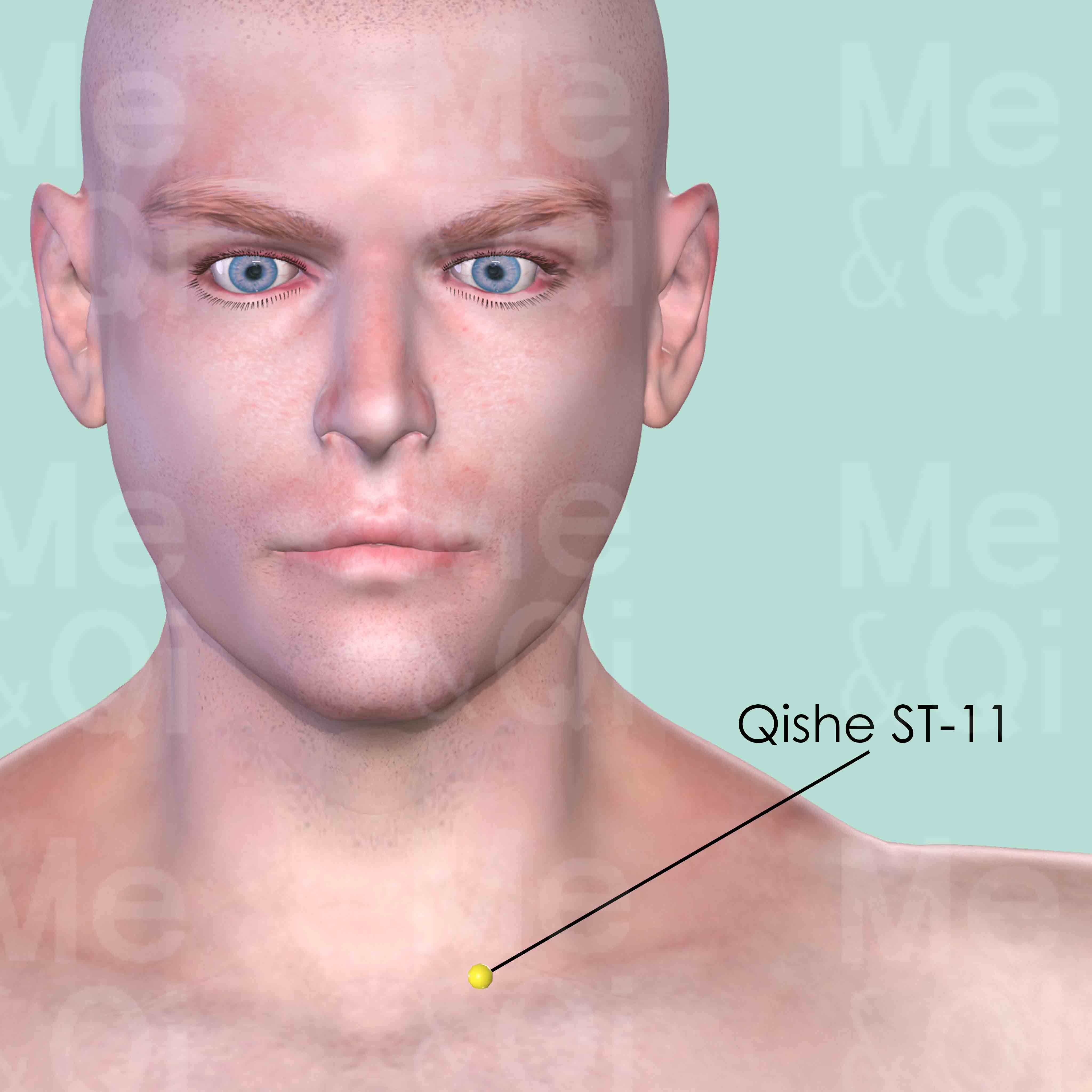
Qishe ST-11
On the upper border of the clavicle, between the tendons of the sternal and clavicular heads of the sternocleidomastoid muscle.

Liangqiu ST-34
2 cun above the upper-lateral border of the patella, on a line between the upper lateral patellar border and the anterior superior iliac spine (ASIS).
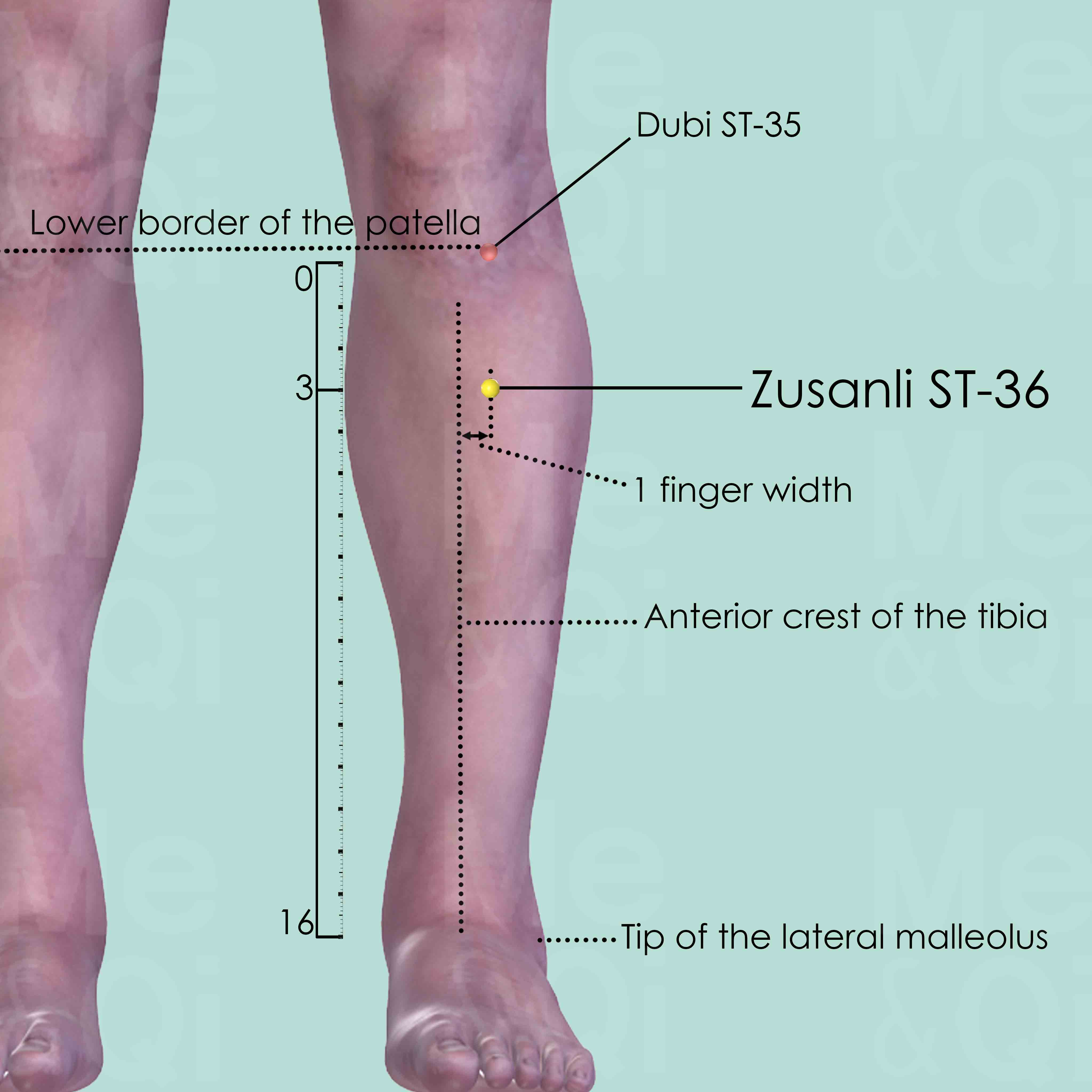
Zusanli ST-36
3 cun below Dubi ST-35, one finger breadth lateral to the anterior crest of the tibia, on the tibialis anterior muscle.
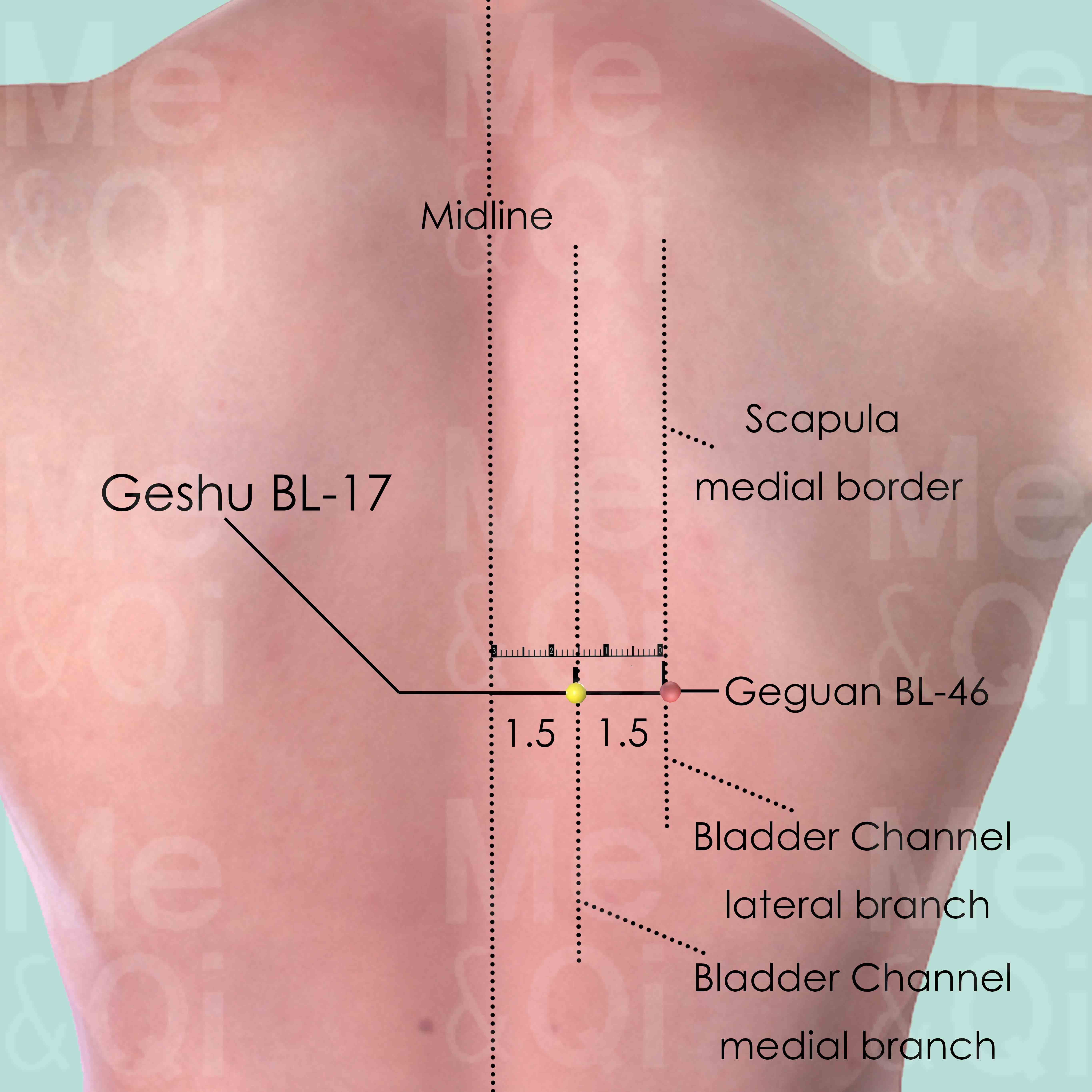
Geshu BL-17
1.5 cun lateral to the lower border of the spinous process of the 7th thoracic vertebra (T7).
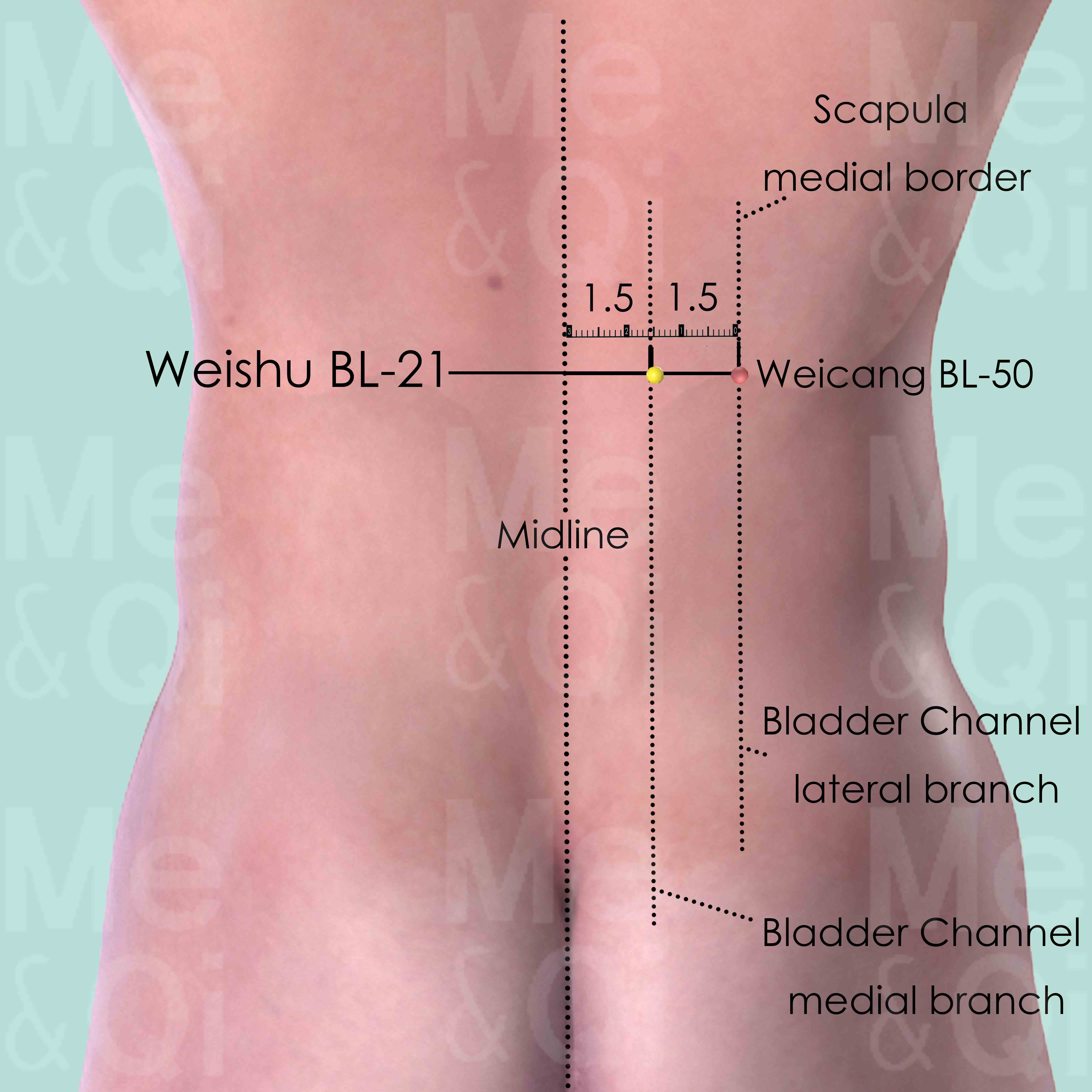
Weishu BL-21
1.5 cun lateral to the lower border of the spinous process of the 12th thoracic vertebra (T12).
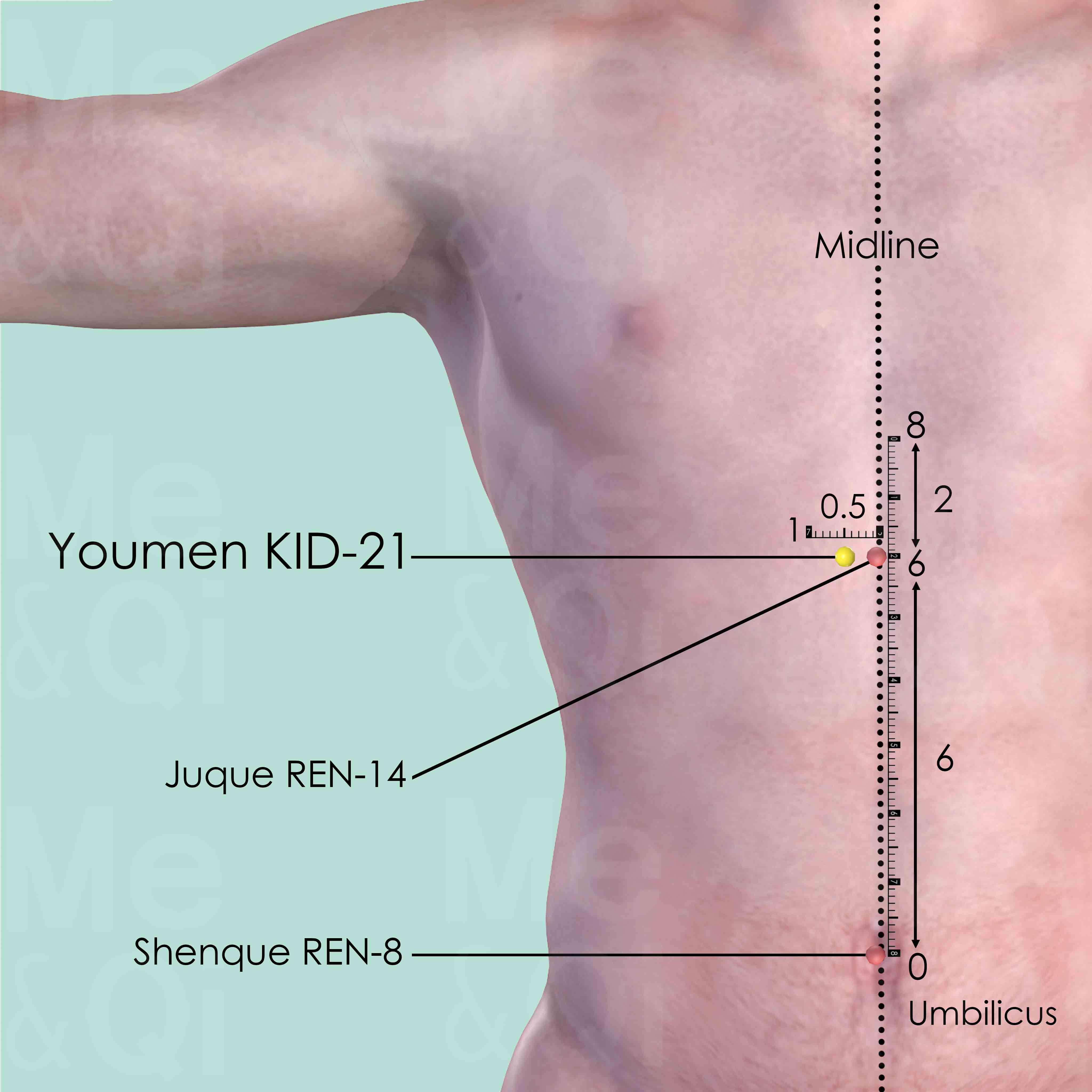
Youmen KID-21
6 cun above the umbilicus and 2 cun below the sternocostal angle, 0.5 cun lateral to the anterior midline.
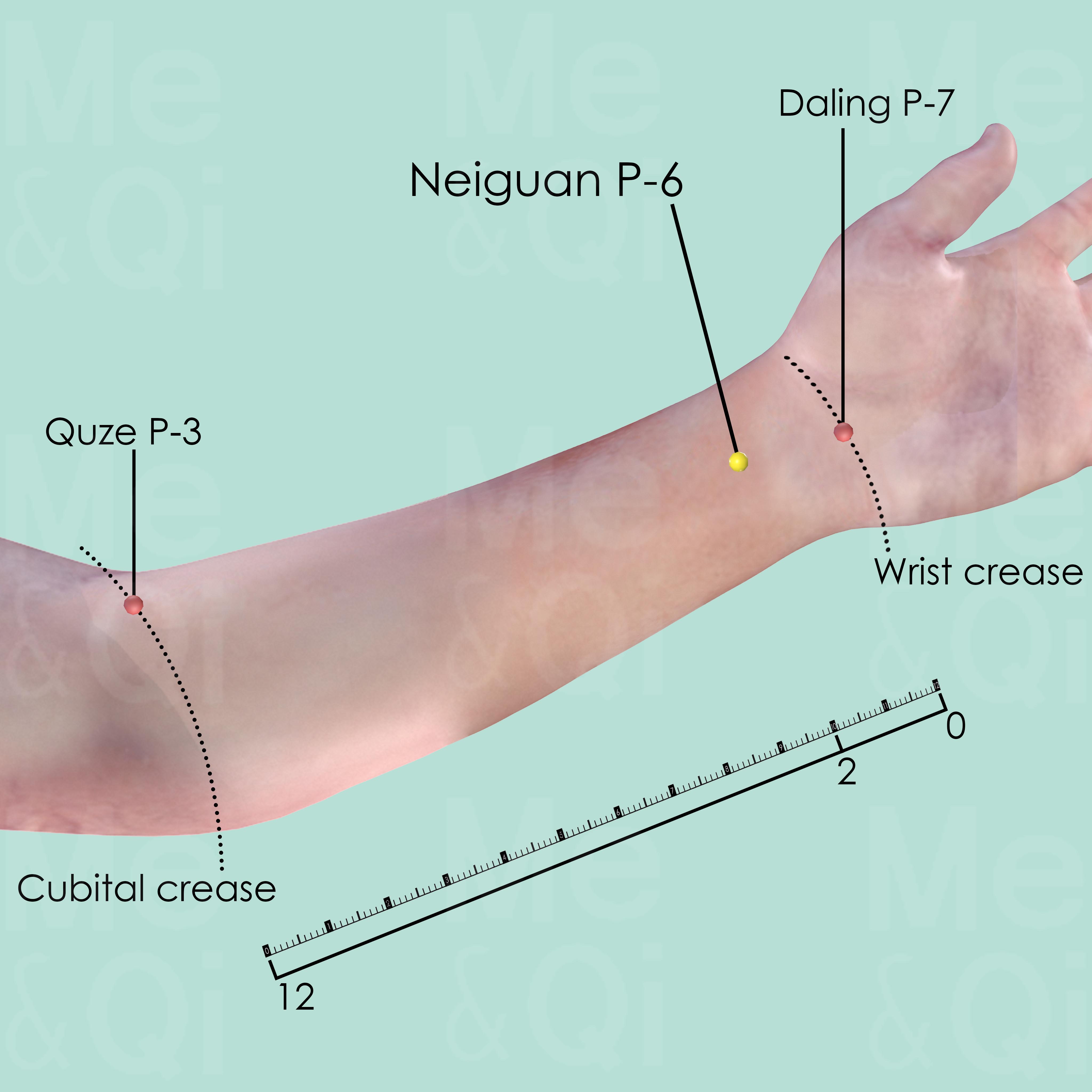
Neiguan P-6
2 cun above Daling P-7 on the transverse crease of the wrist, between the tendons of palmaris longus and flexor carpi radialis muscle.
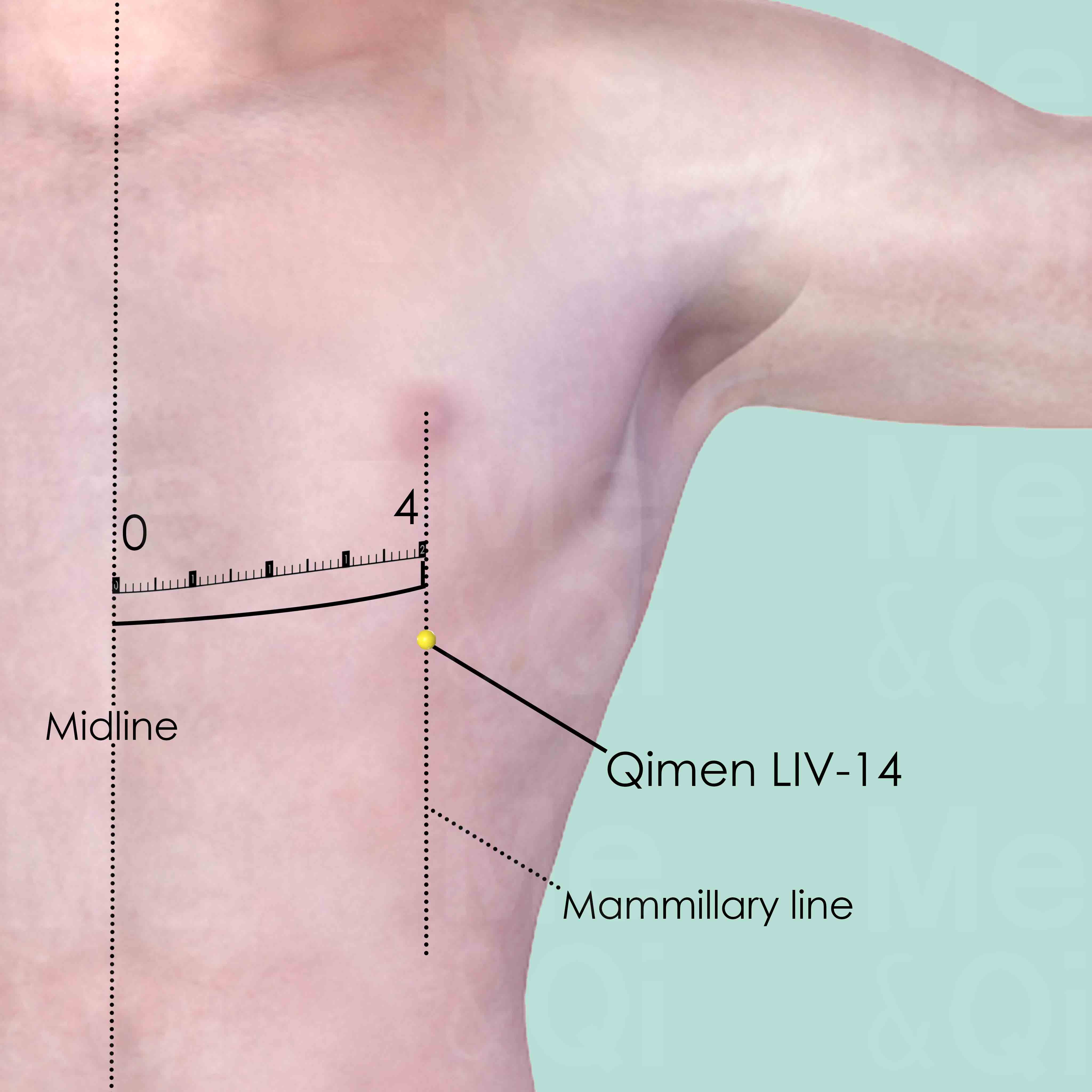
Qimen LIV-14
On the mammillary line, two ribs below the nipple, in the 6th intercostal space, 4 cun lateral to the midline. Please note that there is an alternative location for LIV-14 at the lower edge of the ribcage in line with the nipple or, in women, 4 cun from the midline. In fact, one could look upon these as two separate points. The one in the intercostal space is used more for Channel problems. While the one at the lower edge of the ribcage is used more for Organ problems.
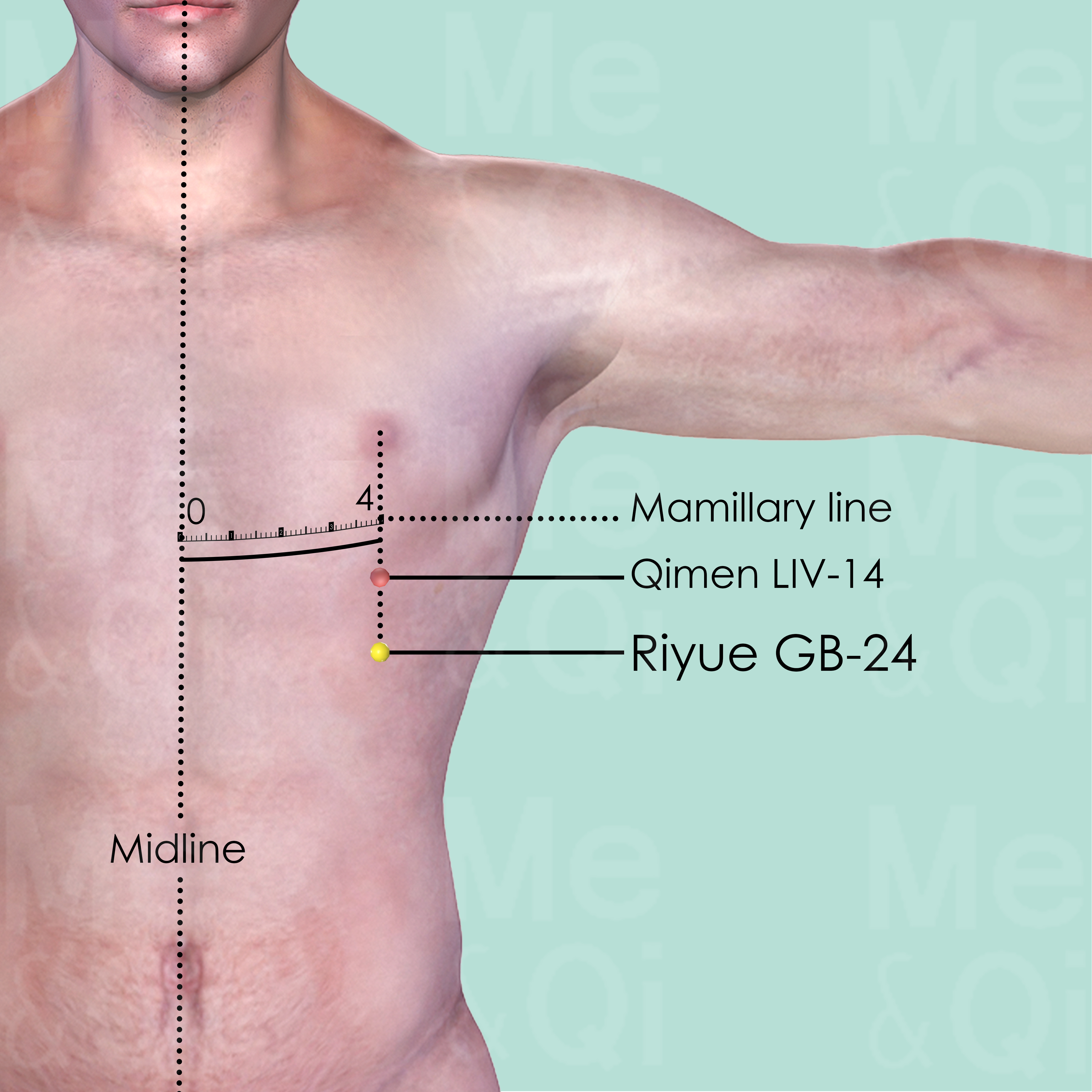
Riyue GB-24
On the mamillary line which is 4 cun lateral to the anterior midline, in the 7th intercostal space, 1 intercostal space below Qimen LIV-14.
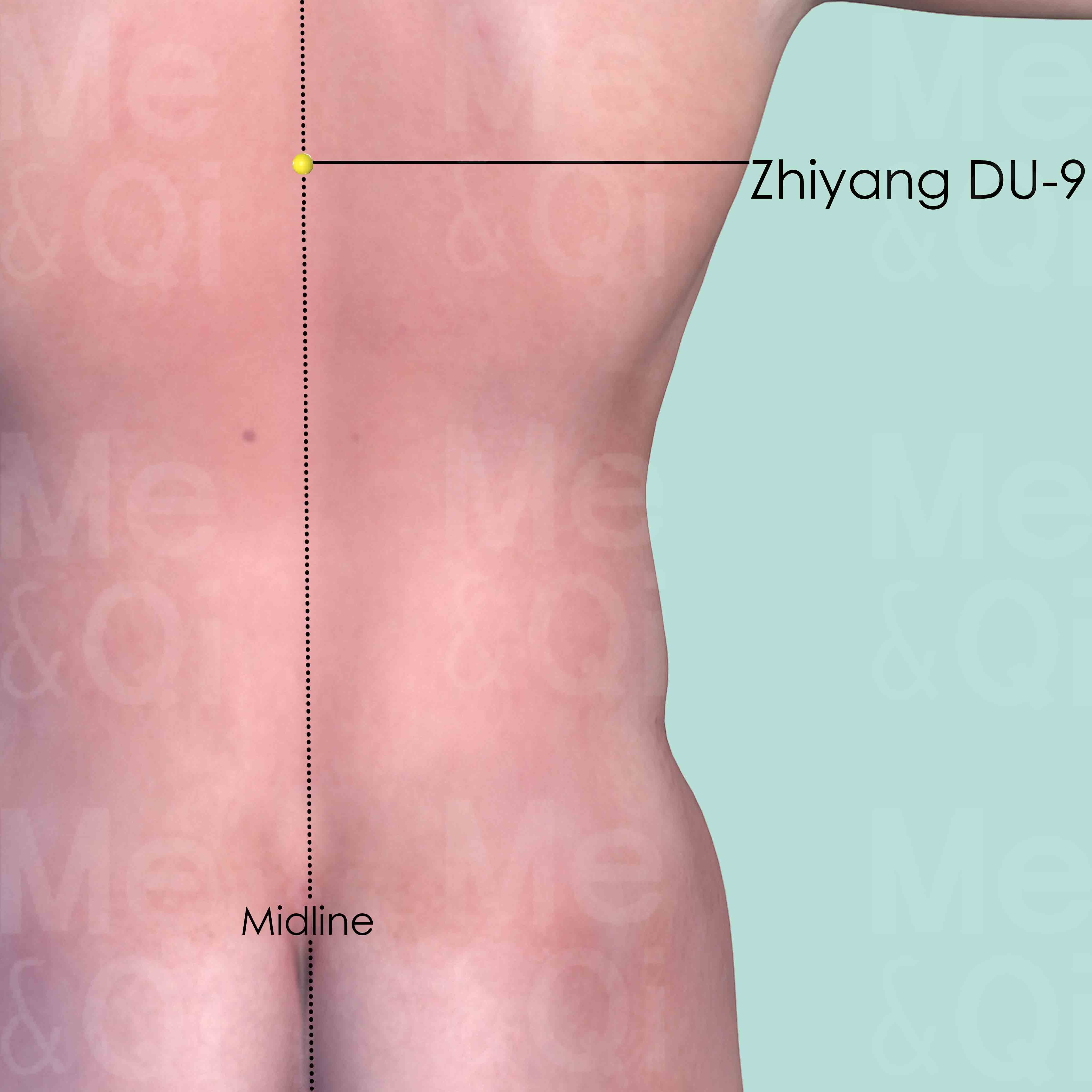
Zhiyang DU-9
On the back midline, in the depression below the spinous process of the 7th thoracic vertebra (T7).
